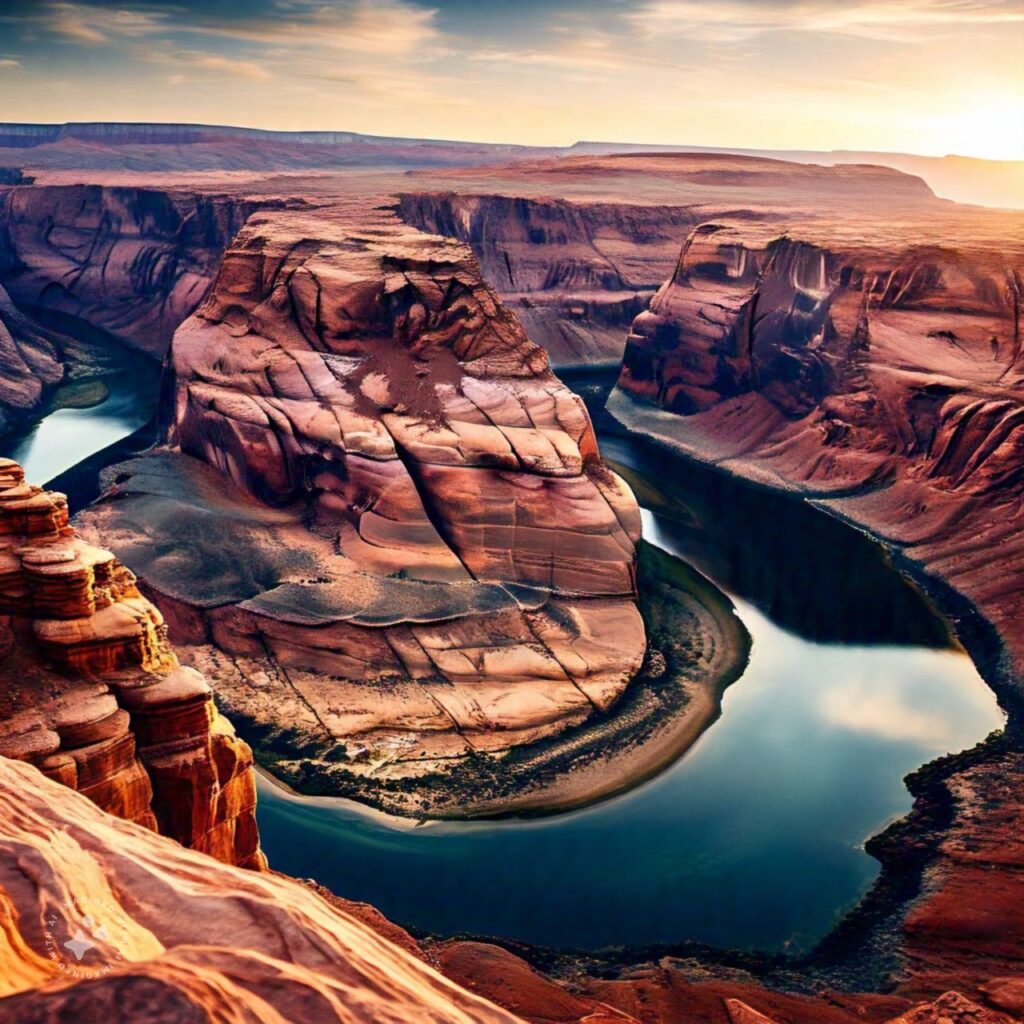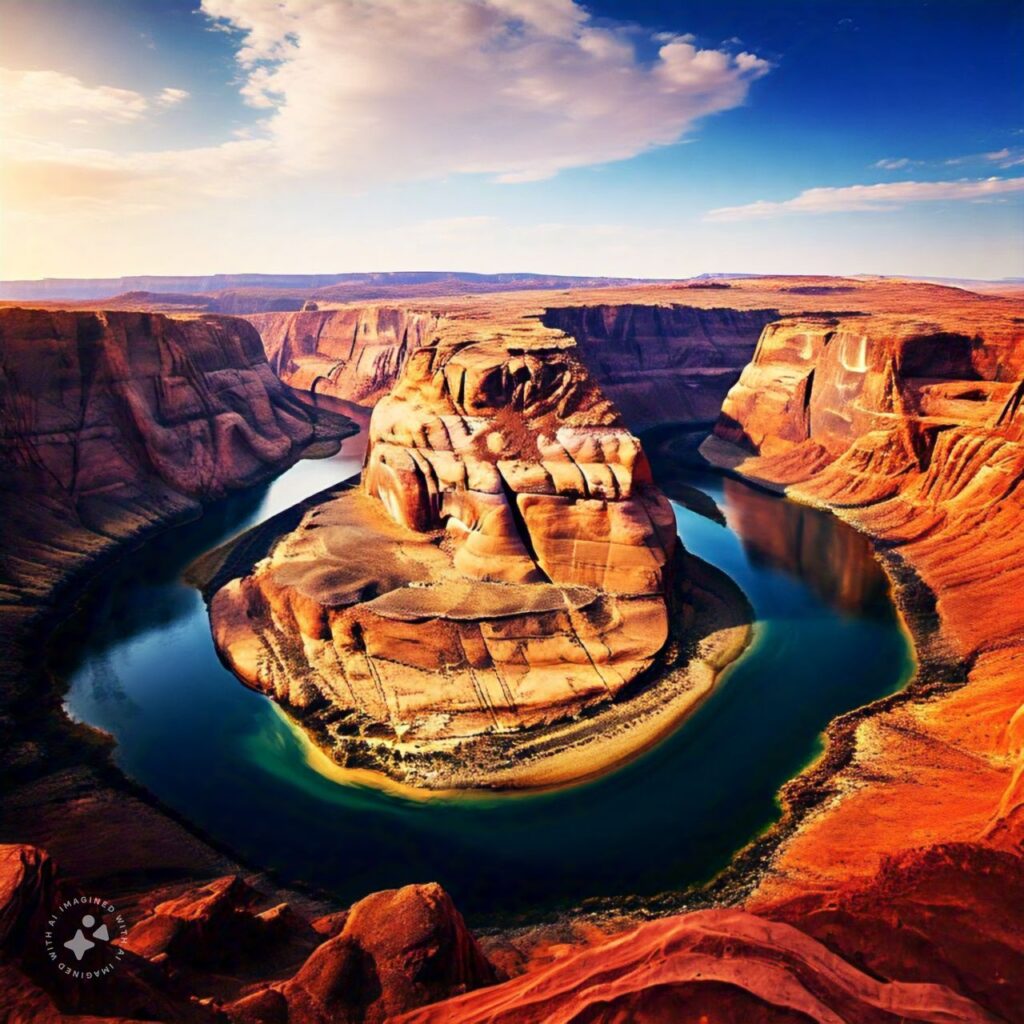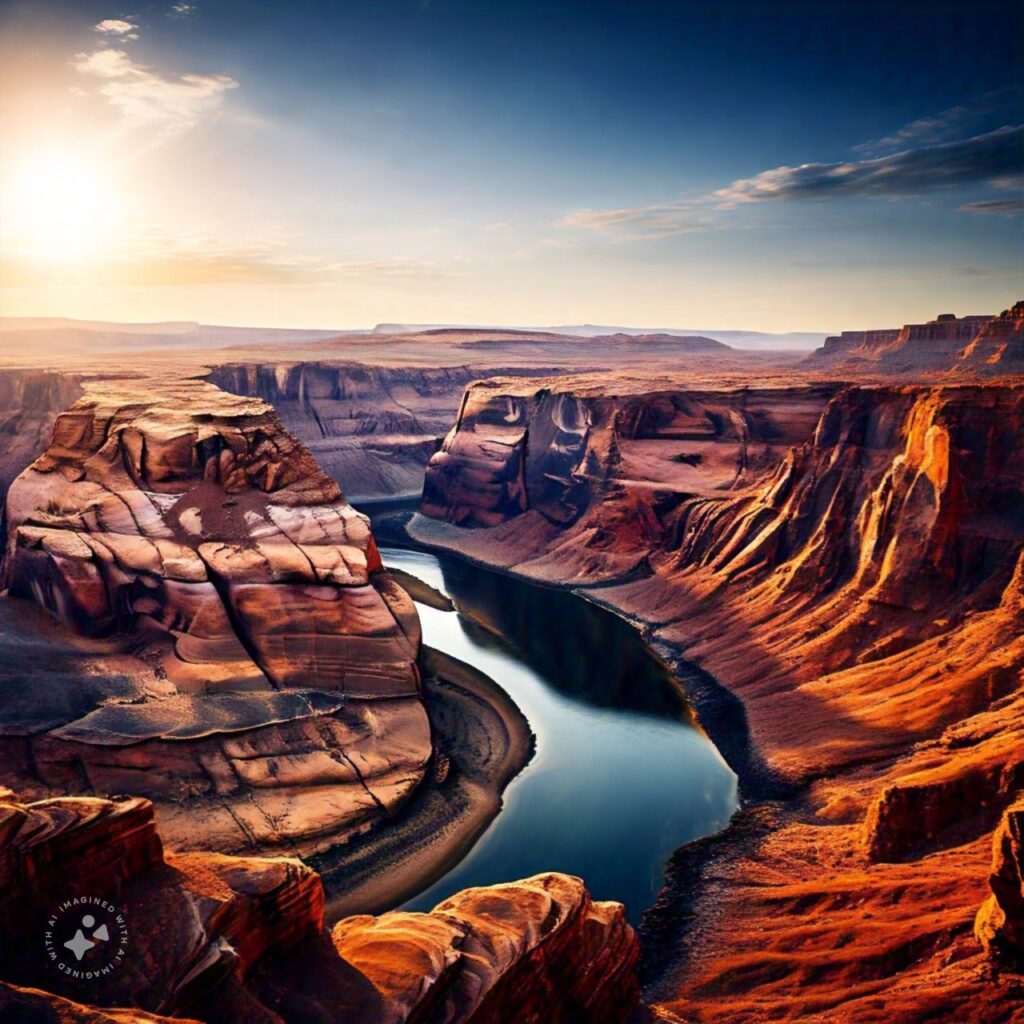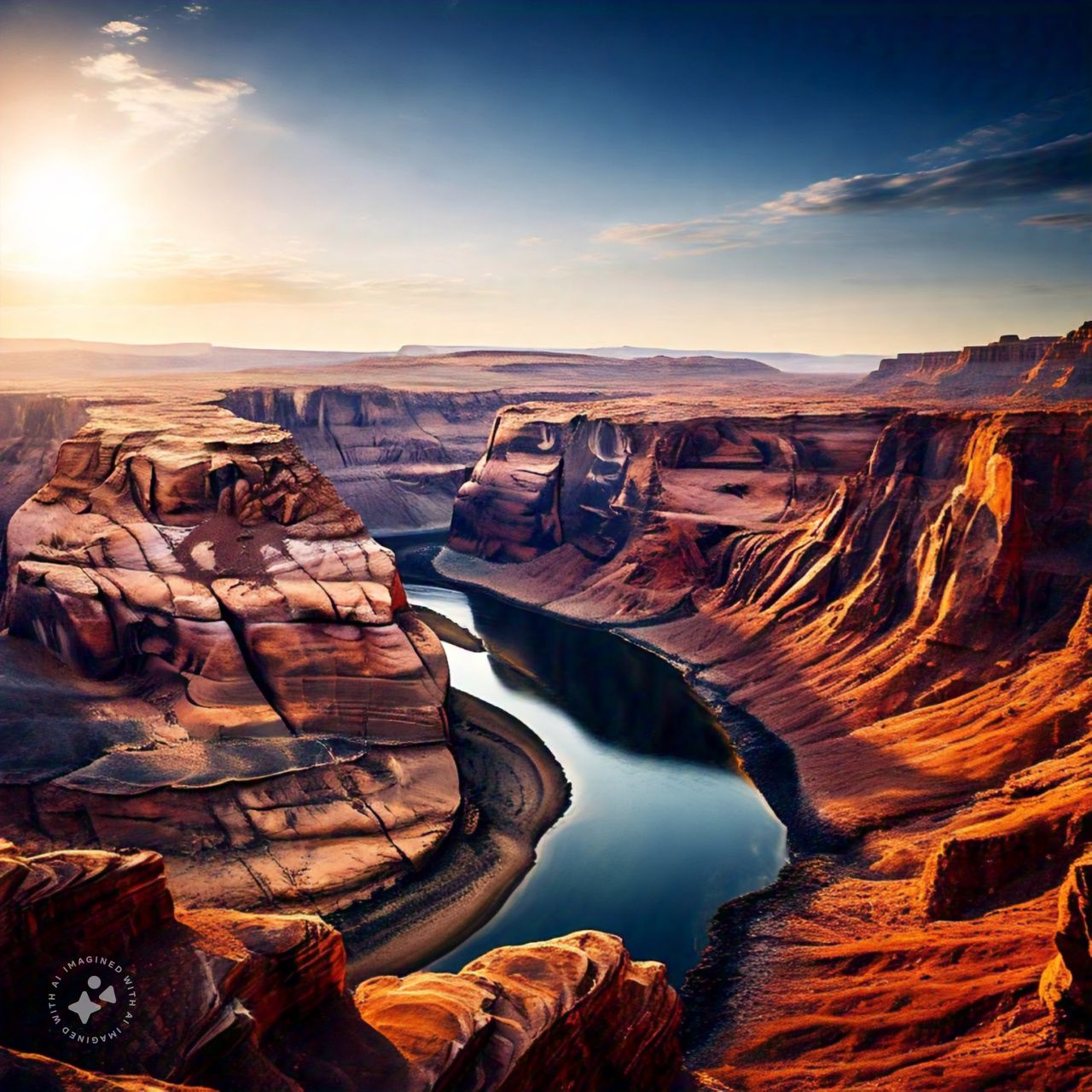The Grand Canyon, one of the world’s most iconic natural landmarks, stands as a testament to the power and beauty of Earth’s geological forces. Carved by the Colorado River over millions of years, the canyon’s awe-inspiring scale, vibrant colors, and intricate rock formations make it a true masterpiece of nature. Stretching over 277 miles (446 km) in length, up to 18 miles (29 km) in width, and plunging to depths of over 6,000 feet (1,800 meters), the Grand Canyon remains a powerful reminder of the planet’s geological history and the passage of time.

In this article, we will explore the history, formation, natural beauty, and significance of the Grand Canyon, as well as why it continues to captivate visitors from around the world.
The Geological History of the Grand Canyon
The Grand Canyon’s geological history stretches back nearly two billion years, making it one of the oldest and most geologically rich landscapes on Earth. The canyon itself is the result of a complex series of geological processes, primarily shaped by the erosive power of the Colorado River, which has flowed through the canyon for millions of years.
The layers of rock exposed in the canyon walls tell the story of Earth’s distant past. The oldest visible rock formations at the bottom of the canyon, known as the Vishnu Schist, are over 1.7 billion years old. These ancient rocks are incredibly dense and durable, having withstood eons of weathering and erosion. Overlying these ancient rocks are layers of sedimentary rock, each representing a different period in Earth’s history. These sedimentary layers, including limestone, sandstone, and shale, were deposited over hundreds of millions of years in shallow seas, deserts, and ancient riverbeds.
The canyon itself was formed by a combination of tectonic activity and erosion. Around 70 million years ago, the region experienced significant geological uplift, causing the land to rise. This uplift exposed the layers of rock, while the Colorado River, carving its way through the landscape, eroded the rock formations over millions of years. The result is the strikingly dramatic canyon we see today.
The Formation of the Grand Canyon
The process of erosion that formed the Grand Canyon is both complex and ongoing. As the Colorado River cuts through the layers of rock, it carries away sediment and reshapes the landscape. Over time, smaller tributaries and seasonal flash floods have contributed to the canyon’s deepening and widening, further defining its striking features.
The canyon’s formation was influenced by multiple geological events. One of the most significant events was the uplift of the Colorado Plateau, which occurred around 5 to 6 million years ago. As the plateau rose, the Colorado River began to carve deeper into the landscape, creating the canyon’s current depth and shape. This ongoing process of erosion and deposition continues today, with the Colorado River still cutting through the canyon and shaping its landscape.
While the river is the primary agent of erosion, the Grand Canyon’s features were also influenced by other natural forces, such as wind and rain. Over time, these forces have shaped the canyon’s iconic spires, cliffs, and rock formations.

The Beauty of the Grand Canyon: A Visual Feast
One of the most striking features of the Grand Canyon is its breathtaking beauty. Visitors from around the world are drawn to the canyon’s massive scale and vivid colors, which change throughout the day depending on the angle of the sun. In the early morning and late afternoon, the canyon’s layers come alive with a spectrum of colors—from rich reds and oranges to golden yellows and soft purples.
The rock layers of the canyon are not only visually stunning but also provide a unique record of Earth’s changing environments over billions of years. These layers, often marked with unique textures, fossils, and mineral deposits, offer a glimpse into the planet’s geological history. The variety of colors and formations is due to the differences in the composition and age of the rock layers, which have been shaped by both natural and environmental forces.
The Grand Canyon also offers spectacular vistas from numerous observation points, including South Rim, North Rim, and Desert View. Each viewpoint offers a unique perspective of the canyon, with different angles and distances providing fresh views of the breathtaking landscape.
The Colorado River, which flows through the base of the canyon, adds to the dramatic scene. From a distance, the river appears as a thin ribbon of blue, cutting through the canyon’s massive depths. For those who venture down to the river, the experience is even more awe-inspiring, as the sheer scale of the canyon can only truly be appreciated from within its depths.
The Grand Canyon’s Flora and Fauna
Despite its arid environment, the Grand Canyon is home to a surprising variety of plants and animals. The canyon’s diverse ecosystems, shaped by variations in elevation and climate, support over 1,500 species of plants, 355 species of birds, 89 species of mammals, and 47 species of reptiles. Visitors can find a wide range of flora and fauna, from the desert cacti at lower elevations to the pine forests at higher elevations.
Desert plants, such as the saguaro cactus and creosote bush, thrive in the canyon’s lower regions, where the temperatures are higher and water is scarcer. As visitors ascend to the higher regions of the canyon, the landscape changes dramatically, and forests of ponderosa pine, oak, and spruce become more common.
The Grand Canyon is also home to a number of animal species, some of which are unique to the area. The canyon is a sanctuary for bighorn sheep, mule deer, and mountain lions. The river supports populations of fish, such as the rainbow trout, and the skies are filled with birds of prey like the California condor and golden eagle.
Cultural Significance of the Grand Canyon
The Grand Canyon is not only a natural wonder but also a site of immense cultural significance. For thousands of years, the canyon has been home to Native American tribes, who have held the land sacred. The canyon is particularly significant to the Havasupai, Hopi, Hualapai, and Navajo tribes, among others, who consider it a spiritual place.
Many of these tribes have long traditions of living in and around the canyon, and their cultures are deeply connected to the land. The Havasupai people, for instance, have inhabited the canyon for centuries and continue to live in the remote areas of the canyon. Their history is intertwined with the canyon’s natural features, and their deep knowledge of the landscape and its ecology is passed down through generations.
The Grand Canyon also holds significance in scientific and historical research. Archaeologists and geologists continue to study the area, uncovering new insights into the ancient peoples who lived there and the geological processes that formed the canyon. The canyon’s rock layers provide a window into the past, helping scientists understand Earth’s history.

The Grand Canyon Today: A Popular Destination
Today, the Grand Canyon is one of the most visited national parks in the United States, attracting over 5 million visitors annually. Visitors come from all over the world to marvel at its grandeur, hike its trails, and experience the unparalleled beauty of this natural wonder. The Grand Canyon offers a wide range of activities for outdoor enthusiasts, from hiking and rafting to helicopter tours and wildlife watching.
The Grand Canyon Village at the South Rim is the main hub for visitors, offering accommodations, restaurants, and guided tours. The North Rim, which is less accessible, provides a more tranquil experience with fewer crowds. For those seeking adventure, the Colorado River offers white-water rafting and opportunities for backcountry camping. The skywalk at Eagle Point provides a thrilling view of the canyon from a glass bridge that extends over the edge.
Conclusion: A Monument to Earth’s Beauty
The Grand Canyon stands as one of nature’s most awe-inspiring creations—a place where time, geology, and beauty converge. Its immense scale, colorful layers, and geological significance make it a true masterpiece of the natural world. Whether you are standing on the edge, hiking its trails, or simply gazing at its vastness, the Grand Canyon offers an experience like no other.
As a UNESCO World Heritage Site and one of the Seven Natural Wonders of the World, the Grand Canyon is not only a symbol of Earth’s ancient past but also a reminder of the ongoing processes that shape our planet. It continues to inspire visitors, scientists, and conservationists alike, ensuring that this magnificent landscape will be preserved for generations to come.
